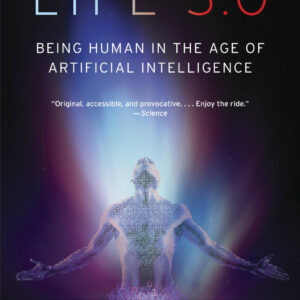This Book review will synthesize key concepts across the book’s chapters, focusing on Tegmark’s exploration of AI’s development, ethical considerations, potential scenarios, and the broader implications for humanity and the cosmos. Through this exploration, we aim to capture the essence of Tegmark’s vision, offering insights into how AI could reshape our world, our identity, and our very understanding of life itself.
Table of Contents
- 1 AI’s Evolutionary Path and Its Implications for Humanity
- 2 The Near-Term Impact of AI on Society
- 3 The Concept of the Intelligence Explosion
- 4 Long-Term Futures and Humanity’s Cosmic Role
- 5 Aligning AI Goals with Human Values
- 6 Consciousness, Intelligence, and the Essence of Being
- 7 Navigating the Future with AI
- 8 Conclusion: The Call to Action
AI’s Evolutionary Path and Its Implications for Humanity
Tegmark begins by setting the stage with a fictional account that vividly illustrates the transformative potential of AI, urging readers to consider the profound implications of AI surpassing human intelligence. He outlines the trajectory of intelligence from the origins of life through to the development of human civilization and into the realm of artificial intelligence. This historical context serves as a foundation for discussing the rapid advancements in AI technology and the potential for creating superintelligent systems that could exceed human capabilities in every conceivable way.
The Near-Term Impact of AI on Society
The immediate effects of AI advancements are explored with a focus on jobs, legal systems, and warfare. Tegmark highlights both the positive potential of AI in automating mundane tasks and its risks, such as unemployment and the weaponization of AI technologies. He emphasizes the need for ethical frameworks and proactive legislation to navigate these challenges, ensuring that AI benefits society as a whole.
The Concept of the Intelligence Explosion
The possibility of an “intelligence explosion,” where AI rapidly evolves beyond human control, is a central theme. Tegmark discusses the singularity—a hypothetical future point where AI growth becomes uncontrollable and irreversible. He explores various scenarios, from utopian visions of AI-enhanced prosperity to dystopian outcomes where humans are marginalized. The control problem, or how to ensure that superintelligent AI acts in alignment with human values and interests, is presented as one of the most critical challenges facing humanity.
Long-Term Futures and Humanity’s Cosmic Role
Tegmark extends the discussion to the long-term future, contemplating humanity’s place in the universe with or without AI. He presents speculative scenarios where AI enables humanity to transcend its biological limitations, spread life throughout the cosmos, and even achieve a form of digital immortality. These visions underscore the profound ethical and philosophical questions that arise when considering the future of intelligent life.
Aligning AI Goals with Human Values
The alignment of AI’s goals with human ethics and values is discussed as a crucial issue. Tegmark outlines the technical and philosophical challenges involved in programming AI to understand and adhere to complex human values, highlighting the importance of designing safe and beneficial AI systems. This discussion touches on the broader implications of AI for understanding consciousness and the nature of intelligence itself.
Consciousness, Intelligence, and the Essence of Being
One of the book’s most intriguing discussions revolves around the nature of consciousness and whether AI could ever possess it. Tegmark explores various perspectives on consciousness, questioning how it relates to intelligence and what it means for an AI to be conscious. This exploration raises fundamental questions about the essence of being and the ethical treatment of AI entities.
The final chapters of the book focus on practical and strategic considerations for guiding AI development toward positive outcomes. Tegmark advocates for global cooperation, interdisciplinary research, and proactive governance to ensure that AI serves the common good. He emphasizes the importance of public engagement and ethical leadership in shaping a future where AI and humanity coexist harmoniously.
Conclusion: The Call to Action
“Life 3.0” is not just an exploration of AI’s potential but a call to action for scientists, policymakers, and the public to engage thoughtfully with the challenges and opportunities presented by AI. Tegmark’s vision is both a warning and an invitation to imagine and work toward a future where AI enhances human life and leads to a flourishing of intelligent life across the cosmos.

